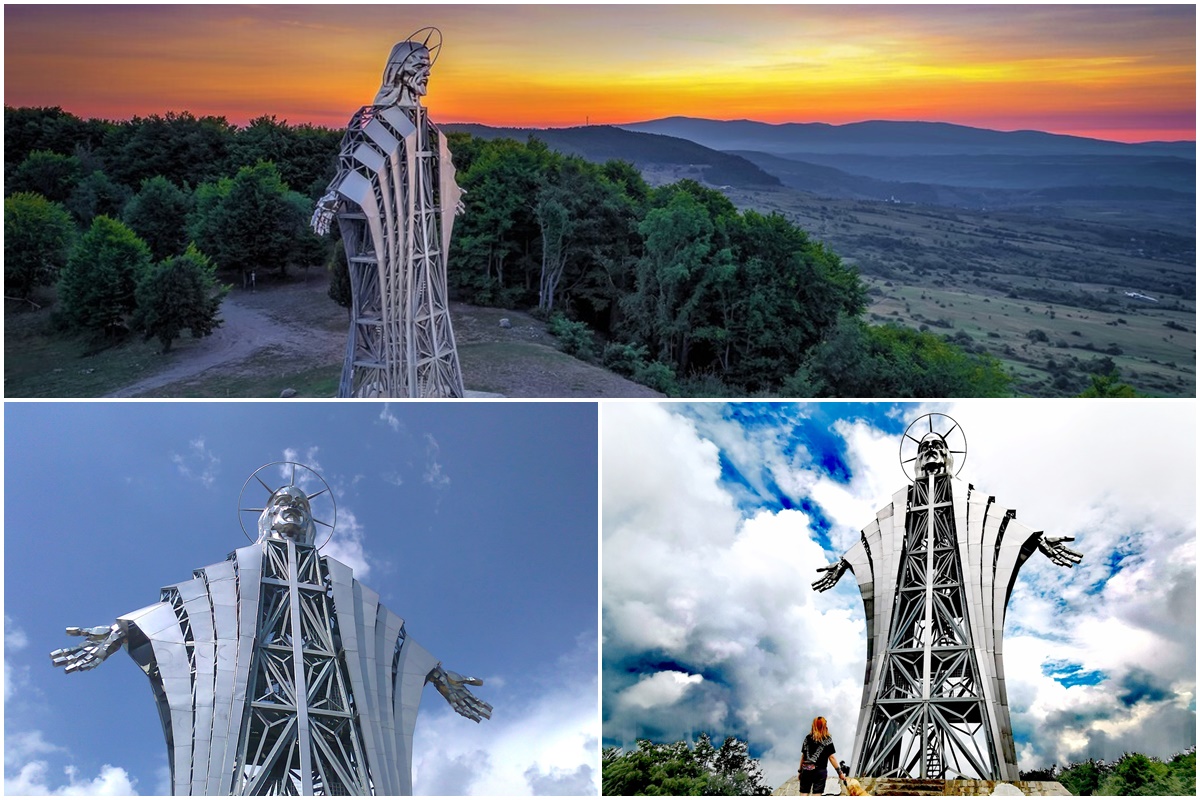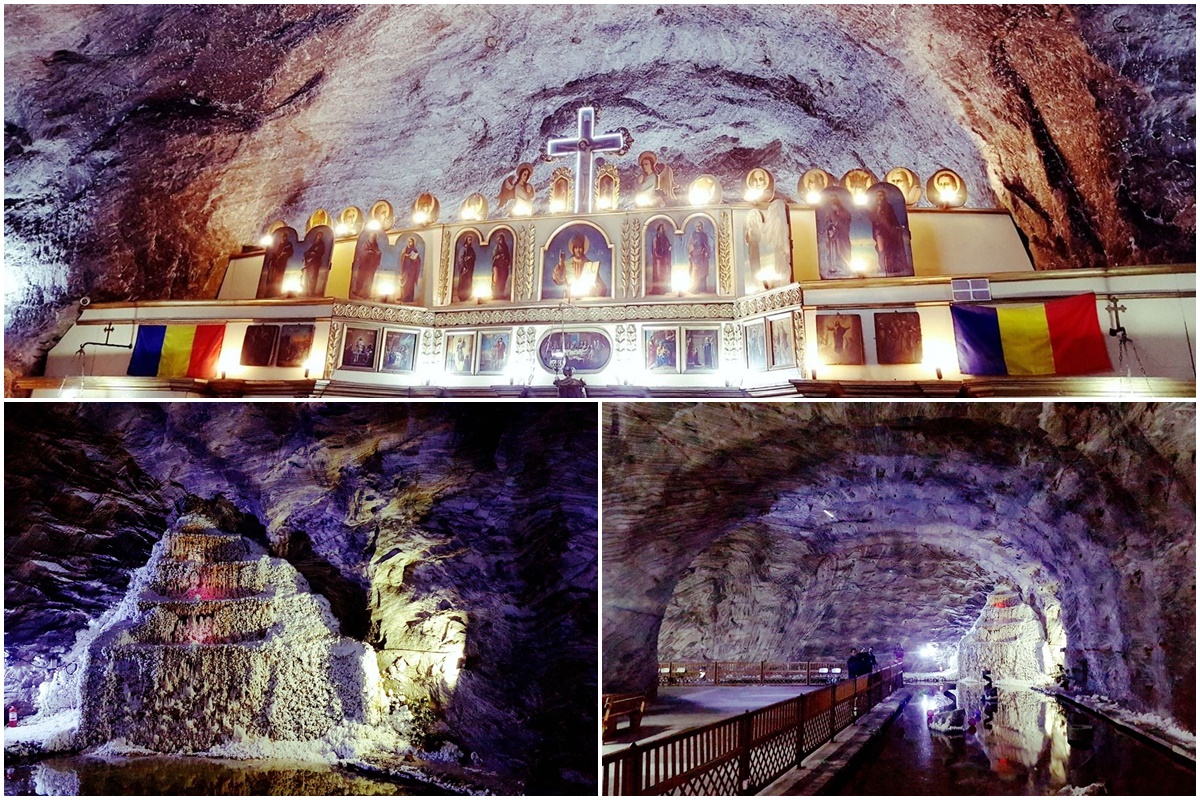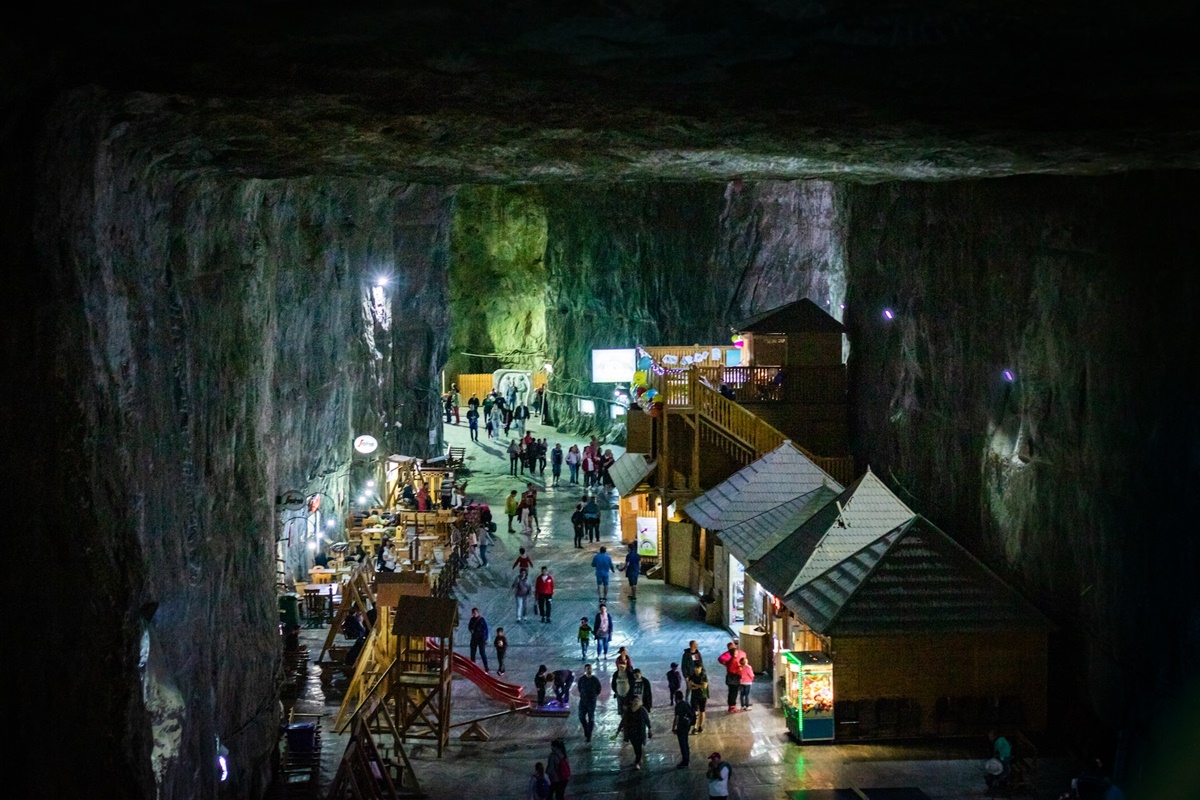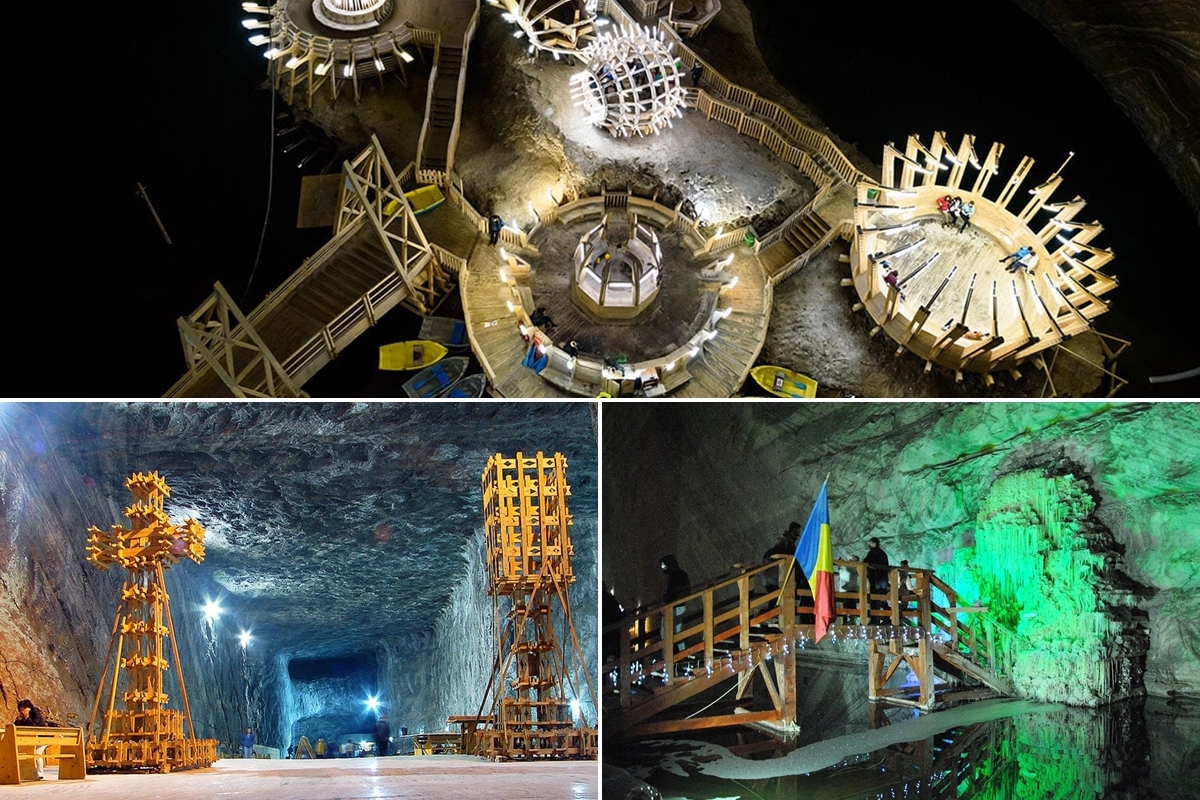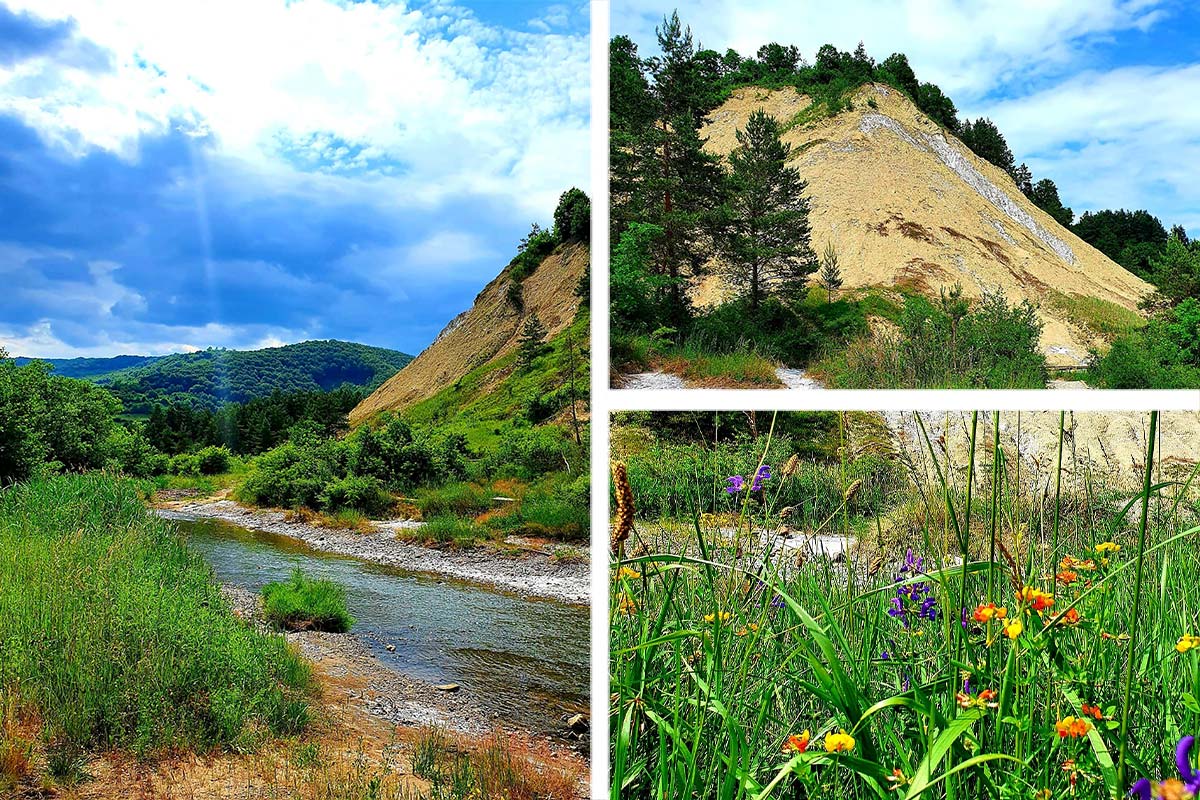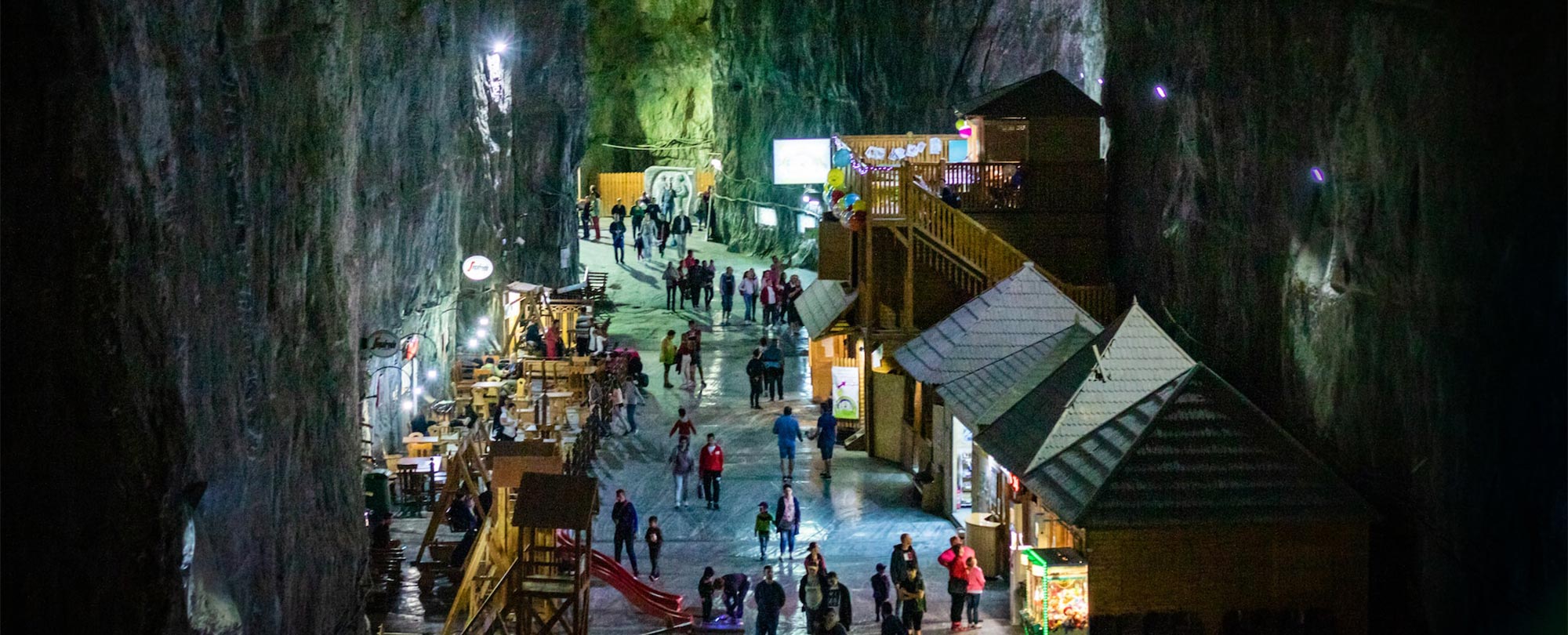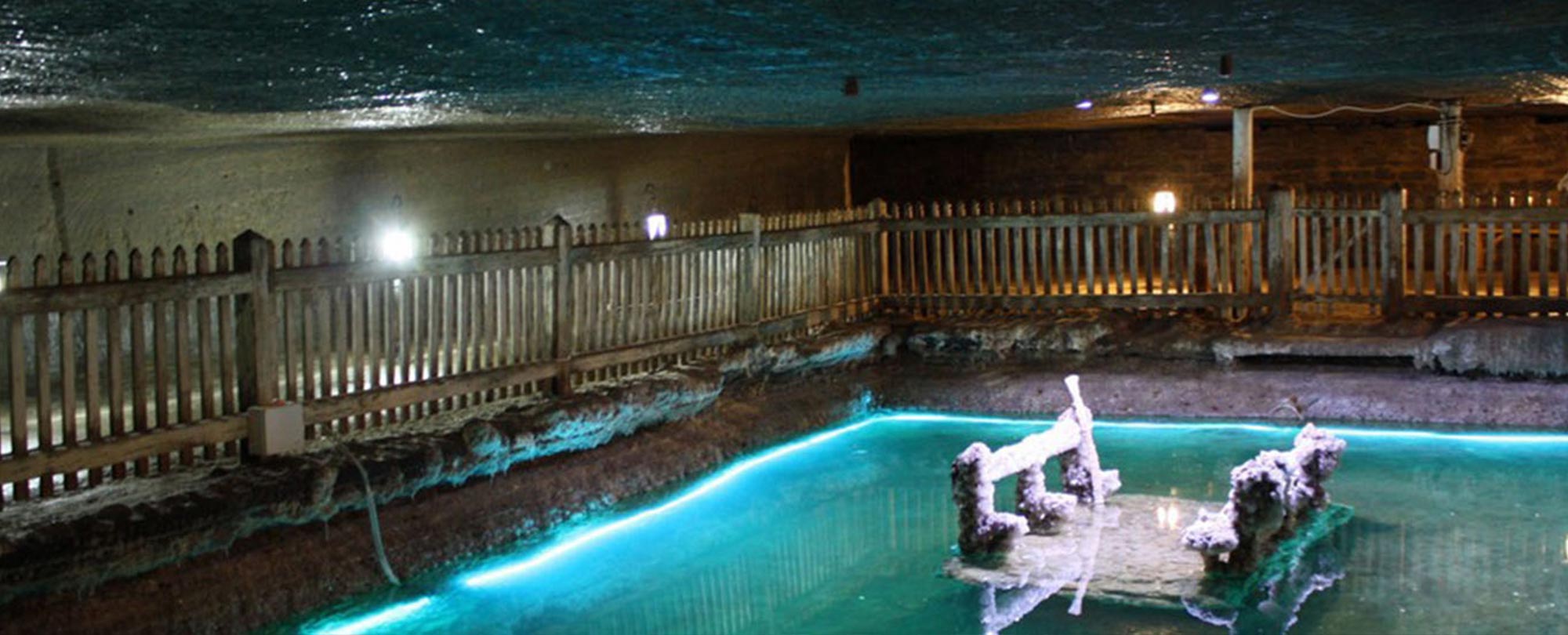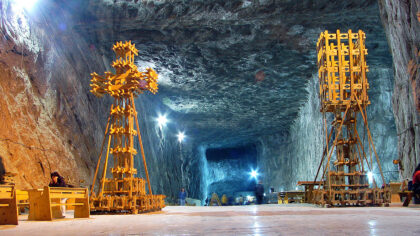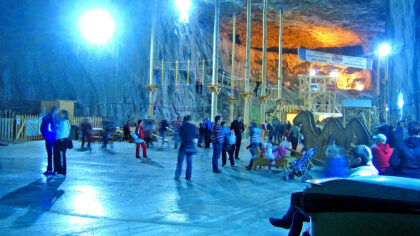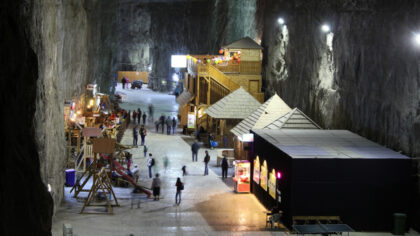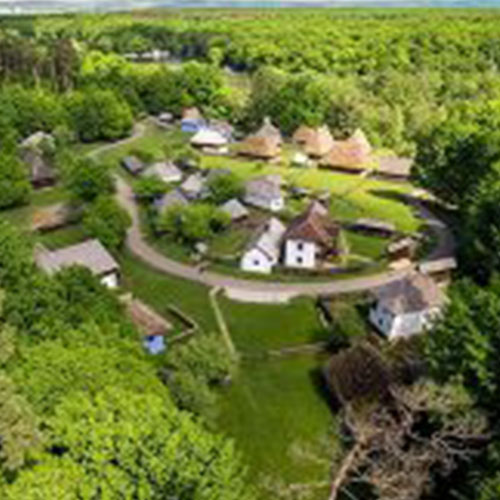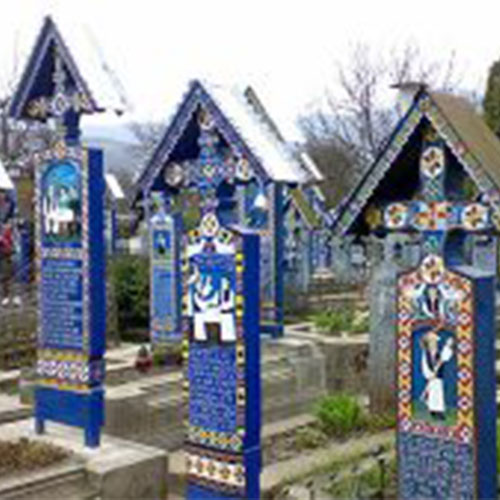Brief description: And if you have not yet reached beyond Brașov, in Transylvania, now is the time to enjoy the wonderful area of Praid, the land of salt, rich in tourist attractions and traditions specific to the Szeklers. Salina Praid, also called a source of health for those with respiratory problems but also a unique place to visit. It’s fantastic that 120 meters underground, in a full salt deposit, you can have a coffee or tea, pray in a mini-church set up here and visit the mini-museum. It’s like a real town set up in a huge cave with games and toys for children of all ages.
County: Harghita
Website: Salt mine Praid
Images: red_frog
Due to the flood damage in May 2025, the salt mine will be closed in 2025!
More Information – History Present
The first salt exploitations are attested from the time of the Romans, but the mine in Praid is documented from 1200, and intensive exploitation takes place from 1700. The Romans only worked on the surface, in square pits, up to a depth of 12-15 m, where the salt could be easily removed on slippery decks and with simple hoisting apparatus, after which they would leave it and start another. This is how the Romans extracted salt everywhere in Transylvania, and the abandoned excavations became lakes.
Volker Wollmann in his monograph on mining emphasizes the presence in the immediate vicinity of the salt deposits, each time, of a Roman fortification. The Roman fort Praetoria Augusta from Inlăceni defended the salt exploitations from Praid. In 1980, a treatment base was opened in the salt mine. Following the extraction of salt, large underground hollows were formed, where a saline microclimate was individualized, with relatively constant temperatures between 14-16 C, low humidity 66-70% and higher atmospheric pressure than on the surface, in average of 735-738 mmHg. The air is strongly ionized, particularly effective in treating respiratory ailments. The treatment base, located at “horizon 50”, at a depth of 120 m, is 20 m wide, 14 m high and several hundred meters long. On the distance of 1250 m from the entrance to the salt pan to the treatment base, people are transported by the salt pan’s buses. The salt mine is equipped with recreation areas, children’s playgrounds, restaurant, toilets, chapel for prayer, internet cafe and a museum that presents the methods of extracting salt from ancient times until today.
In the Praid salt pan, an underground speleo- and climate-therapeutic treatment is carried out, as a simple and effective method of improving the condition of patients suffering from respiratory tract diseases, of maintaining and restoring the balance of the soul and the tone of the vegetative nervous system.
Present
In 2016, the Praid salt mine was the most visited salt mine in Romania, with over 200,000 tourists throughout the year, followed by Slănic Prahova, with over 150,000 tourists, and the Târgu Ocna Salt Mine and the Cacica Salt Mine.
Our UiR database: You can also visit and explore this nearby ...Zur Suchfunktion!



